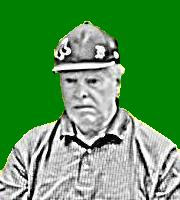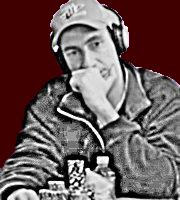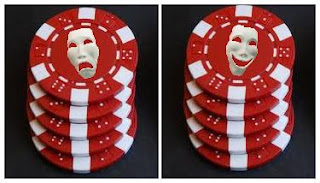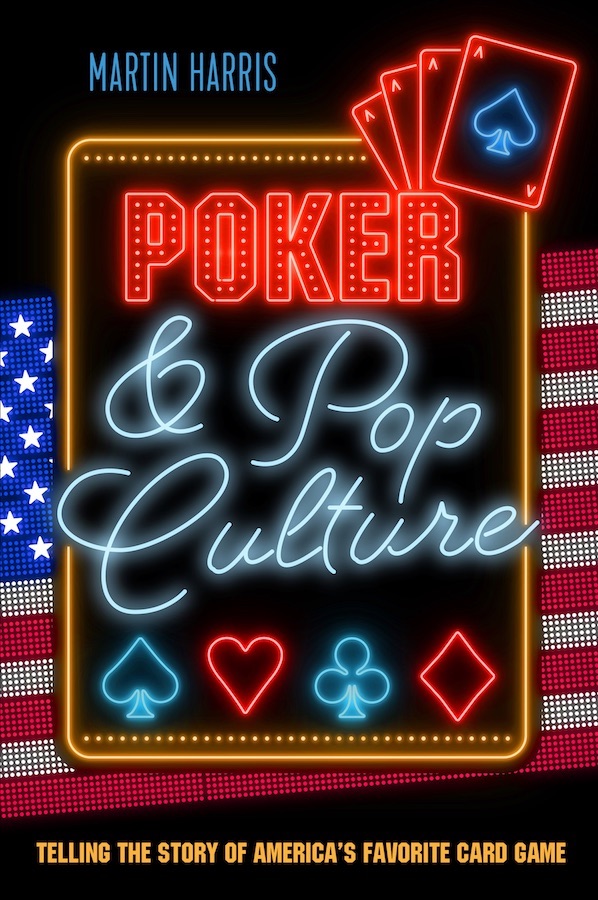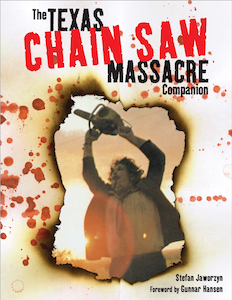I enjoy playing online poker. Strictly small stakes, natch. Been doing so for several years now, and hope to continue playing in the future, too.
With online poker, there’s always a leap of faith. One can never know with 100% certainty that one is not being dealt a crooked game. But I can say that almost every time I’ve ever sat down to play I’ve felt reasonably sure the games have been on the up-and-up.
How long, though, can online poker -- as we’ve been enjoying it over these last few years -- survive in its current form? Have to admit, this recent “bots” business has me wonderin’...
Some News About “Some of your opponents”
Over the weekend there was quite a lot of chatter on the forums, Twitter, and elsewhere in response to the fact that on Friday a large number of players had received some sort of refund or compensation from Full Tilt Poker.
Most of those receiving money were sent emails which began by announcing that the “Full Tilt Poker Security department has recently concluded an extensive investigation and we have determined some of your opponents were in violation of our site terms.” The email went on to note that the offending accounts had been “permanently closed,” the money confiscated, and refunds awarded to affected players “based on the number of tournaments or hands played against the offending players, and the amount won or lost against them.”
The emails provided no other specifics, only adding that “for a number of reasons, we are unable to provide any other additional information” regarding the violations of the site terms. It looks as though some players might have begun receiving refunds as early as late September, actually, then late last week came an especially high number of refunds, prompting players to congregate on the forums and elsewhere to figure out why exactly they were getting money returned to them.
By Friday afternoon, an explanation had been found, thanks primarily to the fact that those responsible for the site term violations had posted a complaint on their website about their accounts being shut down and funds confiscated. That’s right -- the cheaters have a website, and a forum, and what appears to be a thriving little community of bot-promoters and -users.
Turns out “some of your opponents” were not who you thought they were. There was a reason why that dude
always seemed to three-bet from the blinds following your late-position attempts to steal. “He” was programmed to do so!
Beware the Bots
The site where the complaint appeared is called “Bonus Bots” and is operated by a group that identifies itself as “Shanky Technologies.” They have apparently been up and running for more than two years now, selling a number of different “poker bot” products that play all sorts of games and work on various sites. A bit of poking around shows one can download demo versions of the programs that’ll run for a couple hundred hands (for hold’em, Omaha/8, pot-limit Omaha, and even blackjack), then unlock them by purchasing licenses which range from $99 to $149.
The “bot” programs are obviously functional, playing both cash games and tourneys for the players who run them. Whether they have been programmed well enough to win consistently is difficult to determine, but it appears as though they had at least enabled many of those who were using them to profit via rakeback.
And while the number of players and accounts that had been using the Shanky Technologies bots is not known, from the forums it appears there were a lot of them, primarily hanging out in the lower buy-in SNGs, MTTs, and ring games, especially Rush Poker where they perhaps could more easily go undetected by players playing against the bots.
The use of “poker bots” of course violates one of Full Tilt Poker’s “
site terms,” the one stating that “the use of artificial intelligence including, without limitation, ‘robots’ is strictly forbidden.” Full Tilt also states that by playing on the site one agrees to allow FTP to “take steps to detect and prevent the use of prohibited EPA [external player assistance] programs,” including the “examination of software programs running concurrently with the Full Tilt Poker software on a player’s computer.”
Other sites have similar restrictions, although the policing against bots is inconsistent. Some have noted that PokerStars appears to be the only U.S.-facing site that has remained constantly vigilant in detecting bots and keeping them off their games.
“An Incredibly Unethical Move”
The complaint from Shanky Technologies is fascinating for a number of reasons, including the fact that it begins by noting that Full Tilt “came out of nowhere” with “no warning” to stop the use of the bots, “and this was after years of tolerating us to such an extent that most of us felt they welcomed us with open arms.”
Indeed, the unapologetic manner in which the bots are discussed on the site’s blog and forums does suggest not only that they’ve been able to use their programs for some time, but that Full Tilt and several other sites --
not including PokerStars or PartyPoker -- have turned a blind eye to their use for quite some time. And some continue to do so, apparently, including UB and Bodog.
The complaint goes on to mention that “hundreds of us” had been using the programs without incident. The move by Full Tilt Poker to freeze their accounts and confiscate their funds is described as “a very sudden and calculated move on their part.” “It would be difficult to describe their actions as anything other than stealing,” says Shanky Technologies, “if you understand the environment.”
They go on to describe Full Tilt’s decision finally to enforce their site term as “an incredibly unethical move” and suggest players stay away from the site, even those who might wish to play there “manually” (i.e., without a “bot”).
Pretty friggin’ audacious, eh? Kind of reminds me of some of those sci-fi stories which try to explore the subject of “robot rights.” Usually such stories involve the development of consciousness or “feelings” in the robots, thereby raising questions about whether or not they might or should be treated similarly to humans and/or afforded the same “rights,” including the right to live.
But Bots are People, Too!
While acknowledging the fact that they’ve been violating one of Full Tilt’s site terms, the makers and users of the poker bots adamantly believe the use of bots to play online poker does
not affect the game’s integrity. In other words, they appear ready to argue for the “right” of their bots to compete against humans, even if the humans -- both the players and those ones running the site -- do not wish to allow such to occur.
One of the users of the Shanky bots
started a thread on Two Plus Two over the weekend defending their use as “a legit form of poker,” claiming “it’s my mind dictating my bot’s actions” and even going so far as to describe using the bot as “a form of poker at its purist.”
Hard to know for sure whether the poster was being truthful or simply provoking. As you might imagine, most of those responding to the post disagreed with its argument, pointing out how poker “at its purist” is a game between people, not a competition to see who can construct the best poker-playing program.
Even so, online poker has always been different from the live game. Sure, it’s a game between people, but we each are operating a machine in order to compete with one another. To what extent are those machines representing us?
Are you human? Am I?
The more I think about it, the more I find the whole incident troubling. Some are suggesting that at certain levels (NL2 and NL5), the games at Full Tilt were “saturated” by these poker-playing bots prior to last week’s action. Again, it is hard to know what to believe, but one assumes that those creating the programs will work further to try to develop ways of running their programs without being detected (“stealth measures,” as the Shanky guys put it).
I keep thinking of that one statement, the one where the makers of the bots try to characterize Full Tilt suddenly bringing down the hammer as “stealing,” explaining that it would appear as such to you, too, “if you understand the environment.”
The reference there is to the lackadaisical enforcement of site terms, although the line makes me think in broader terms about the game we have enjoyed for so long. And we thought we knew.
How well do most of us playing online poker really “understand the environment”?
Labels: *the rumble, artificial intelligence, ethics, Full Tilt Poker, poker bots
 A week from tomorrow and the 2010 WSOP Main Event cranks back up as the “November Nine” return to the Rio All-Suite Hotel & Casino to restart the tourney after a nearly four-month hiatus. (Cool pic of the scene there at the Penn and Teller Theater during last year’s final table courtesy the great FlipChip.)
A week from tomorrow and the 2010 WSOP Main Event cranks back up as the “November Nine” return to the Rio All-Suite Hotel & Casino to restart the tourney after a nearly four-month hiatus. (Cool pic of the scene there at the Penn and Teller Theater during last year’s final table courtesy the great FlipChip.)








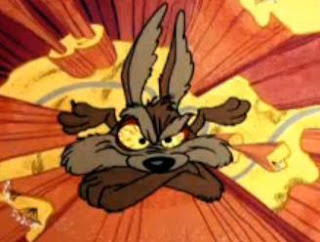



 . The BB checked, the button bet $1.25, and the BB called. The turn was the
. The BB checked, the button bet $1.25, and the BB called. The turn was the  , and this time both players checked.
, and this time both players checked. . The big blind checked, and the button bet $2.50. The BB called, turning over
. The big blind checked, and the button bet $2.50. The BB called, turning over 


 for a Broadway straight. As it turned out, the button had bluffed on the end, holding but
for a Broadway straight. As it turned out, the button had bluffed on the end, holding but 


 , and the BB won the entire pot. That’s when the BB made a weird, if familiar, comment in the chat box.
, and the BB won the entire pot. That’s when the BB made a weird, if familiar, comment in the chat box. 






